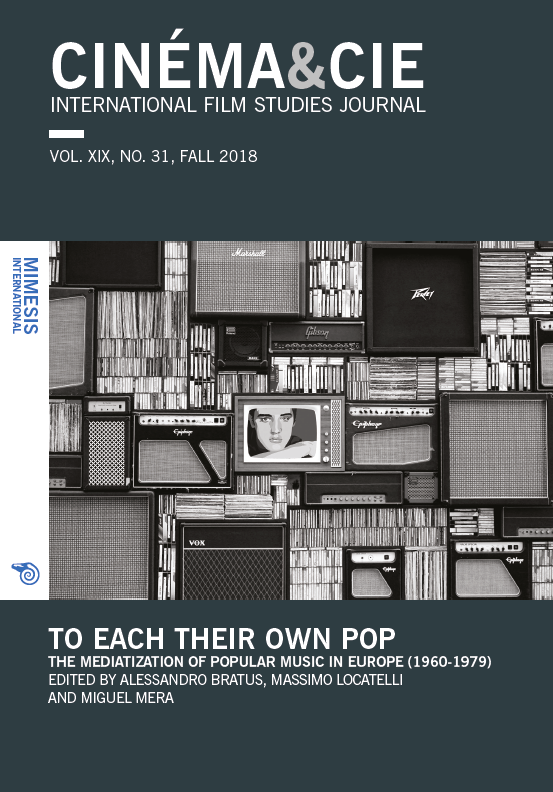The Surface of Modernity: Mario Schifano and Fabio Mauri between Screens and Monochrome Painting (1957–1969)
Abstract
Between the end of the 1950s and the beginning of the 1960s, monochrome painting became a relevant tendency in Italy, crossing post-Spatialist and post-Informal practices. In the same years, the modernity of mass culture had overwhelmed a society which was mainly agricultural in a short time. As great symbols of this irreversible mutation, cinema and media image soon became a new lexicon for the research of many artists. By drawing on sources of that time intertwined with more recent theories on media and their relationship with modernity, this article analyses Fabio Mauri’s ‘screens’ and Mario Schifano’s ‘monochromes’ as an attempt of narrating the new ‘society of spectacle’ through the paradox of the absence of images. For both Rome-based artists, modernity seems at the same time something to reveal and to resist. If the former chooses a language that anticipates Pop grammar, the latter seems to look for a synthesis between new mass society and humanism. Both testify to the Italian way of the Post-War modernity.
Downloads
Published
How to Cite
Issue
Section
License
Copyright (c) 2021 Cinéma&Cie. Film and Media Studies Journal

This work is licensed under a Creative Commons Attribution 4.0 International License.





